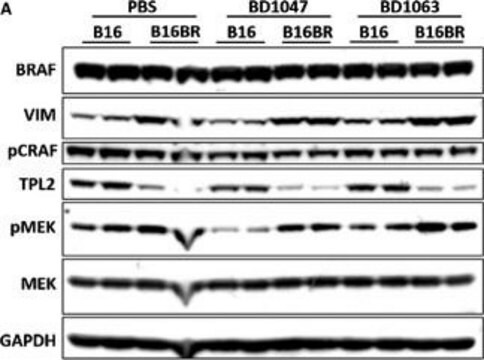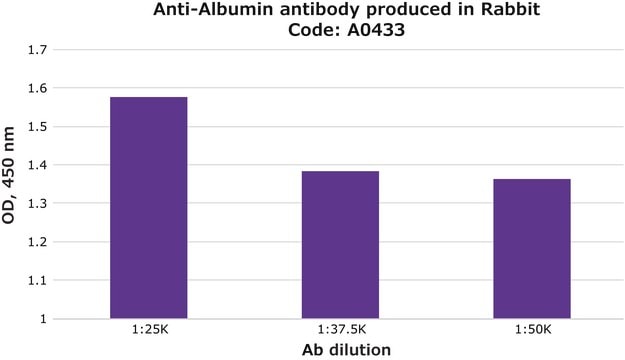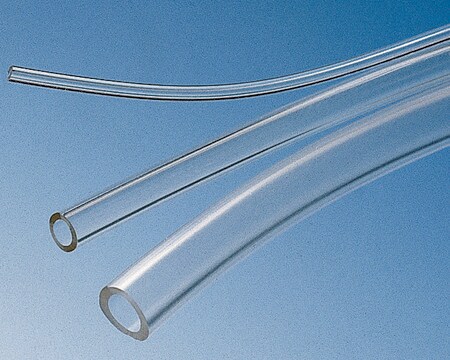ABN1649M
Anti-TMC1
serum, from rabbit
Sinonimo/i:
Transmembrane channel-like protein 1, Beethoven protein, Deafness protein, Transmembrane cochlear-expressed protein 1
About This Item
IF
WB
immunofluorescence: suitable
western blot: suitable
Prodotti consigliati
Origine biologica
rabbit
Livello qualitativo
Forma dell’anticorpo
serum
Tipo di anticorpo
primary antibodies
Clone
polyclonal
Reattività contro le specie
mouse, monkey
Confezionamento
antibody small pack of 25 μL
tecniche
immunocytochemistry: suitable
immunofluorescence: suitable
western blot: suitable
Isotipo
IgG
N° accesso NCBI
N° accesso UniProt
modifica post-traduzionali bersaglio
unmodified
Informazioni sul gene
mouse ... Tmc1(13409)
Descrizione generale
Specificità
Immunogeno
Applicazioni
Immunofluorescence Analysis: A representative lot detected TMC1 in P9 mouse outer hair cells (OHCs) (Kurima, K., et. al. (2015). Cell Rep. 12(10):1606-17).
Western Blotting Analysis: A representative lot detected TMC1 in COS-7 cells (Labay, V., et. al. (2010). Biochemistry. 49(39):8592-8).
Western Blotting Analysis: A 1:1,000 dilution from a representative lot detected TMC1 in HEK293 cells transiently transfected with Fugene and TMCx-cherry cDNAs (Courtesy of Dr. Angela Ballesteros).
Immunofluorescence Analysis: A representative lot detected TMC1 in COS-7 transfected cells expressing TMC1-GFP (Courtesy of Dr. Angela Ballesteros).
Neuroscience
Qualità
Western Blotting Analysis: A 1:500 dilution of this antibody detected TMC1 in 10 µg of mouse retinal tissue lysate.
Descrizione del bersaglio
Stato fisico
Stoccaggio e stabilità
Altre note
Esclusione di responsabilità
Non trovi il prodotto giusto?
Prova il nostro Motore di ricerca dei prodotti.
Codice della classe di stoccaggio
12 - Non Combustible Liquids
Classe di pericolosità dell'acqua (WGK)
WGK 1
Punto d’infiammabilità (°F)
Not applicable
Punto d’infiammabilità (°C)
Not applicable
Certificati d'analisi (COA)
Cerca il Certificati d'analisi (COA) digitando il numero di lotto/batch corrispondente. I numeri di lotto o di batch sono stampati sull'etichetta dei prodotti dopo la parola ‘Lotto’ o ‘Batch’.
Possiedi già questo prodotto?
I documenti relativi ai prodotti acquistati recentemente sono disponibili nell’Archivio dei documenti.
Il team dei nostri ricercatori vanta grande esperienza in tutte le aree della ricerca quali Life Science, scienza dei materiali, sintesi chimica, cromatografia, discipline analitiche, ecc..
Contatta l'Assistenza Tecnica.







